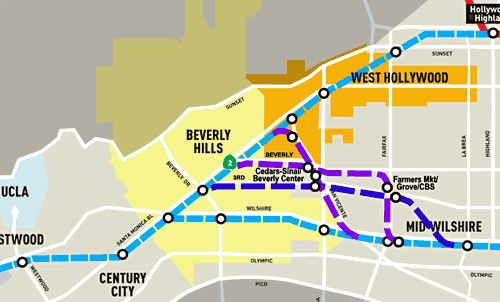 The Regional Connector is a potential connection between the Blue and Expo lines and the Gold Line to Pasadena and East Los Angeles. This is an important enhancement to the existing lines, that would allow a one-seat ride into and across downtown Los Angeles, rather than current transfers at 7th and Flower or Union Station to the Red Line or downtown buses.
The Regional Connector is a potential connection between the Blue and Expo lines and the Gold Line to Pasadena and East Los Angeles. This is an important enhancement to the existing lines, that would allow a one-seat ride into and across downtown Los Angeles, rather than current transfers at 7th and Flower or Union Station to the Red Line or downtown buses.
Metro is beginning an Alternatives Analysis on potential routes. There are many possible routes; the map above (click to enlarge) is my submission, seeking the shortest and quickest route across downtown that serves important destinations.
It would continue in subway from the existing Blue / Expo Line station at 7th Street up Flower Street to 3rd Street, then make a diagonal across Bunker Hill. It would continue east under 1st Street, then curve north under Main Street beneath the City Hall south lawn.
North of Temple Street it would transition from shallow subway to aerial by Los Angeles Street at Aliso Street. The final section would be aerial along Aliso Street to an aerial half grand union with the Gold Line at Aliso and Alameda, to allow trains to go in all directions.
Potential subway station locations are:
- Flower Street at or north of 5th Street, which also serves southern Bunker Hill via existing escalators;
- Around Grand Avenue and 2nd Street, serving northern Bunker Hill (hopefully part of the redevelopment project there);
- By City Hall either on 1st Street around Spring Street or on Main Street near Temple Street.


